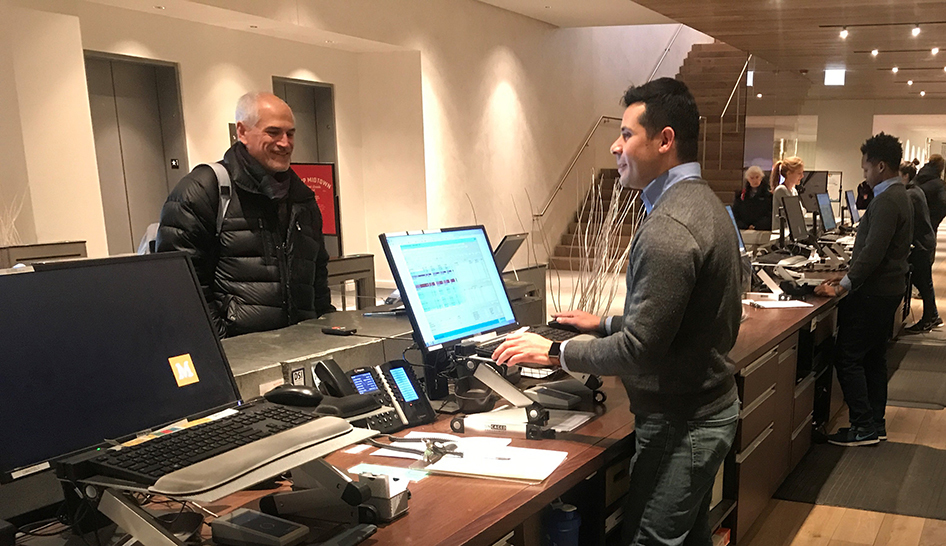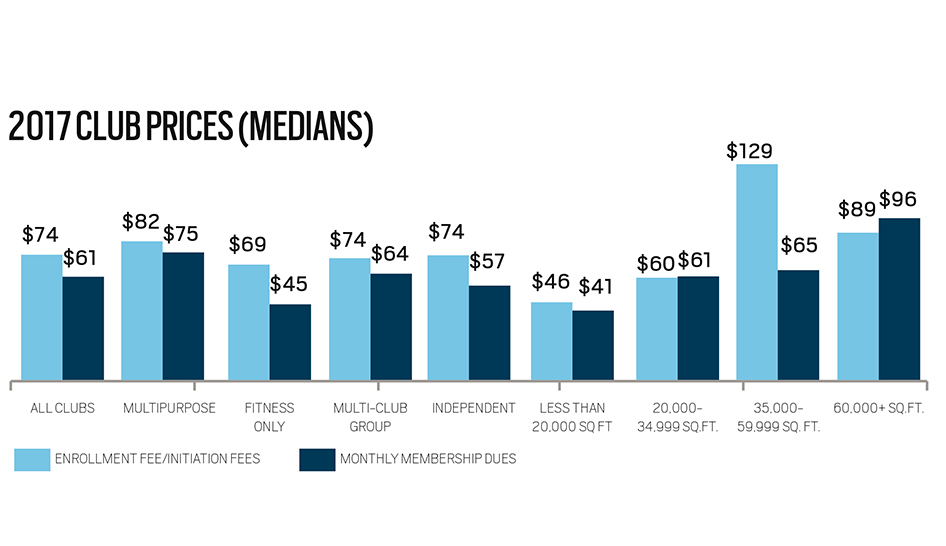If your club has sports facilities such as racquet and aquatics, community-oriented programs such as health education workshops, and the typical group exercise and training programs available at most fitness-only clubs, be sure your membership plans are priced accordingly.
Also, most multipurpose clubs are often larger in square footage than other facilities, an important factor to keep in mind as you develop your club’s pricing strategy. For example, sample clubs with an indoor square footage of 60,000 or greater reported charging a median of $96 in monthly dues and $89 in enrollment/initiation fees.
The typical fitness-only club charges $45 in monthly dues.
Fitness-only clubs participating in IHRSA’s Industry Data Survey reported charging a median of $45 in monthly dues and $69 in enrollment fees, the lowest among all segments observed in Profiles of Success.
A median of $45 in monthly dues places the typical fitness-only respondent near a mid-market price range, highlighting the success some leading club operators have with adopting a mid-tier price point.
Does your fitness-only club offer services and amenities beyond cardio and resistance facilities, such as personal training, group exercise, retail, beverage/juice bar, etc.? If so, you may employ a membership pricing strategy that emphasizes affordability and value at a reasonable cost.
Clubs part of a chain charge a median of $64 in monthly dues; independent clubs $57 per month.
Clubs part of a chain as well as independent clubs often vary in pricing strategies, highlighting the importance of competitive advantage.
In the 2018 IDS, clubs part of a chain reported charging a median of $64 in monthly dues and $74 in enrollment fees. However, the middle range for monthly dues at multi-site clubs varied the most among segments at $45-$112.67 per month, showing the variety of pricing options at facilities part of a multi-club group.


